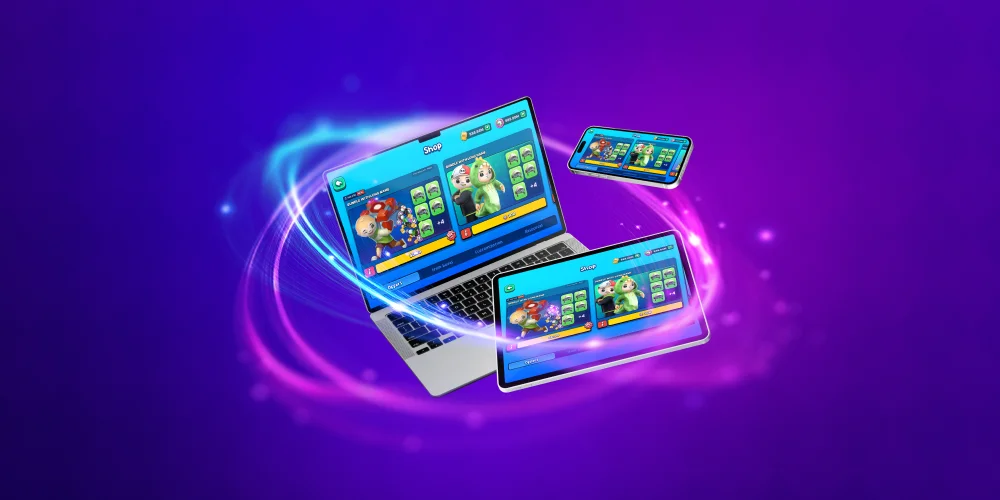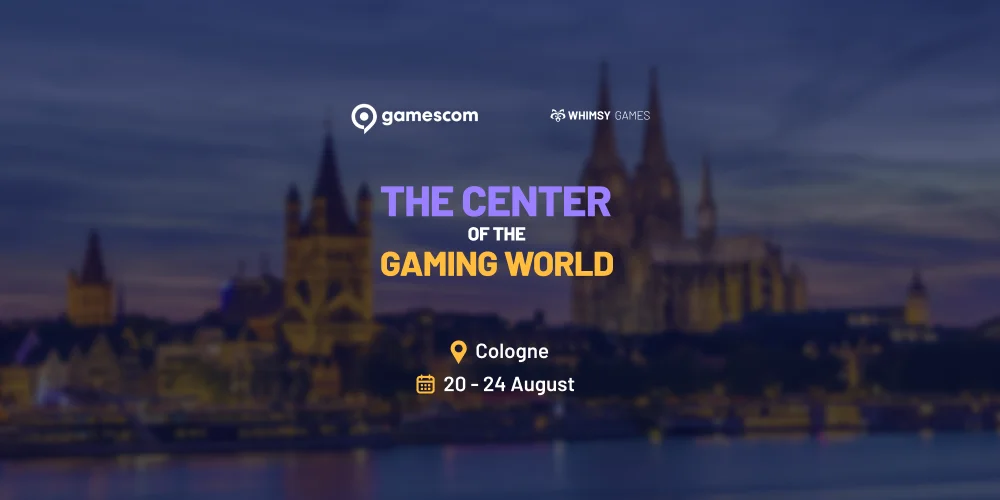
VR in Telecommunication: Exploring Futuristic Trends
KEY POINTS OF THE ARTICLE
- Overview of the convergence between virtual reality (VR) and telecommunication, shaping the future of communication.
- Exploration of VR’s impact on industries like healthcare, education and real estate.
- Examination of how 5G enhances VR experiences by providing better connectivity.
- Insights from successful VR-telecommunication integrations and key lessons learned.
- Analysis of challenges in integrating VR including technical problems and users resistance.
- Exploration of VR applications beyond entertainment including remote collaboration and virtual property tours.
The world is changing rapidly, and so are the ways in which we communicate. With the rise of new technologies, we are now seeing a convergence between virtual reality (VR) and telecommunication. In this blog post, we will explore this exciting new trend and what it means for the future of communication. We’ll be discussing how VR is transforming various industries including healthcare, education, and real estate. We’ll also take a closer look at the role of 5G in enhancing VR experiences and its implications for future VR developments. Through case studies, we’ll examine successful implementations of ar and vr in telecommunication and lessons learned from them. Furthermore, we’ll discuss some of the challenges faced in integrating VR into telecommunication such as technical hurdles and user resistance to this new technology. Join us on this journey as we explore the amazing possibilities that lie ahead with futuristic VR telecommunication trends.
Understanding VR Telecommunication Trends
VR telecommunication trends, shaping future connectivity, have a significant impact on the telecommunications industry. Embracing the potential of VR, telecom companies are revolutionizing the viewing experience, redefining real-world interactions. In recent years, VR devices have become prevalent, with augmented reality applications enhancing real-time experiences. Telecom companies recognize the transformative power of VR in bridging physical travel barriers and creating immersive virtual environments through AR applications.
The Emergence of VR in Telecommunication
In recent years, virtual reality is gaining significant traction in the telecommunications sector. Its emergence is offering new business opportunities and telecom companies are integrating VR into their services. The advent of virtual reality technology is reshaping telecommunication experiences and playing a vital role in transforming the telecommunication landscape. This integration of VR devices is redefining the viewing experience, creating a more immersive and interactive virtual environment for users in real time.

The Impact of VR on Current Telecommunication Trends
Virtual reality has opened up new possibilities for the telecommunication industry, redefining the customer experience and significantly impacting current trends. Telecom companies are utilizing VR for remote collaboration, while VR simulations are enhancing the viewing experience in telecommunication. The real-world applications of VR in telecommunication have proven to be transformative in recent years, as telecom companies integrate VR devices into their services, creating a virtual environment that complements the physical world. This integration of VR technology with real-time communication is reshaping the landscape of telecommunication experiences.
The Synergy between VR and Telecommunication
The convergence of VR and telecommunication is creating new opportunities and reshaping digital connectivity. How is vr related to telecommunications? Recent years have seen these technologies complementing each other to enhance connectivity, driving innovations and unlocking new use cases. Augmented reality applications on VR devices are reshaping the real world, offering real-time experiences and reducing the need for physical travel. Telecom companies are leveraging VR to create virtual environments, transforming the landscape of digital interaction. This synergy is revolutionizing the way we connect and interact in the telecommunications industry.
How VR and Telecommunication Complement Each Other
The integration of virtual reality and telecommunication is revolutionizing digital information landscapes, enabling remote training and collaboration. This collaboration enhances real-time interactions and simulates real-world environments, unlocking new use cases for both VR devices and telecom companies. By creating a virtual environment that complements the physical world, vr game development software, AR applications and VR technology are reshaping the future of digital connectivity, ultimately transforming the way we interact and communicate in recent years.
Examples of Successful VR-Telecommunication Integrations
Examples of successful integration of virtual reality (VR) and telecommunication have reshaped various sectors, revolutionizing customer service experiences and creating immersive viewing experiences. The advantages of vr telecommunication are obvious. VR technology plays a crucial role in advancing telecommunication, opening new possibilities by simulating real-world environments. The collaboration of VR and telecommunication enhances real-time interactions, enabling remote training, virtual collaboration, and transforming the digital information landscape. These integrations are driving innovations and unlocking new use cases, converging to create new opportunities in recent years.
The Role of 5G in VR Telecommunication
5G’s high bandwidth and low latency enhance VR experiences, crucial for connectivity’s future. Revolutionary 5G technology reshapes VR telecommunication, advancing the gaming industry.
The Power of 5G in Enhancing VR Experiences
The evolution of VR devices has reshaped the real world, with telecom companies pivoting toward creating immersive experiences. In recent years, 5G technology has revolutionized the accessibility of VR content, enhancing real-time experiences in virtual environments. This high bandwidth connectivity has transformed the graphics and realism of VR, redefining the market for VR headsets in telecommunication. The synergy between 5G and VR is paving the way for a new era of augmented reality applications, offering unprecedented possibilities for physical travel and exploration.
5G and Its Implications for Future VR Developments
5G technology is creating new avenues for business opportunities in virtual reality while reshaping the future of VR simulations. Its impact on future VR developments is significant for telecommunications, revolutionizing the connectivity and enabling enhanced virtual collaboration. VR technology is leveraging the capabilities of 5G for improved virtual experiences, ensuring real-time interactions in a virtual environment. Telecom companies and VR device manufacturers are exploring the potential of 5G to bring augmented reality applications to the forefront, transforming the way we perceive and interact with the physical world.
VR Transforming Various Industries
Virtual reality’s impact is felt across diverse sectors and industries, ushering in new business prospects and reshaping the world. Telecom companies are leveraging VR devices to create immersive experiences, unlocking opportunities beyond the physical world. AR applications and VR enable real-time interactions, transforming industries such as healthcare, education, and real estate. In recent years, VR has extended its reach, with smartphones and HMDs driving VR’s integration into various sectors, revolutionizing how we perceive and interact with the real world.
Revolutionizing Healthcare with VR Telecommunication
In recent years, VR telecommunication has revolutionized healthcare by enabling remote surgeries and medical training. It enhances patient therapy and rehabilitation and enables medical consultations through virtual meetings. Telecom companies use VR for remote collaboration in healthcare research, improving customer experience. The integration of VR devices in the healthcare sector has created a virtual environment that bridges the gap between the real world and the physical world, resulting in real-time connectivity for medical professionals.
VR in Education: A New Reality for Learning
In recent years, virtual reality has revolutionized education by offering immersive learning experiences for students. VR telecommunication has transformed traditional education into real-time, virtual simulations, allowing telecom companies to create virtual classrooms and enable remote training. Moreover, VR devices have opened up new possibilities for remote collaboration in education, enhancing accessibility to educational content from different parts of the world. This technology is paving the way for a new era in learning, breaking the barriers of the physical world and bringing education to life in a virtual environment.
Looking Beyond Entertainment: VR’s Broader Reach
In recent years, VR telecommunication has gained significant traction in various industries beyond entertainment, offering numerous benefits and creating new business opportunities. Telecom companies are exploring the impact of VR applications in sectors such as real estate and healthcare, transforming the viewing experience and creating a virtual environment for users. This technology goes beyond gaming, impacting the real world through virtual simulations, making it a key focus for telecom companies and VR device manufacturers.
The Influence of VR on Social Media and Gaming
Virtual reality technology has significantly revolutionized social media interactions and gaming experiences in recent years. VR devices have created new possibilities for virtual collaboration in gaming, offering high-quality, immersive experiences to users. Telecom companies utilize VR simulations to enhance the customer experience in the gaming industry, shaping the future of virtual reality gaming. The influence of VR extends beyond entertainment, transforming various industries with its innovative applications.
VR in Real Estate: Virtual Property Tours
Virtual reality (VR) technology has revolutionized real estate marketing by offering immersive virtual property tours. Through VR telecommunication devices, real estate agents and clients can collaborate virtually, enabling real-time property viewing experiences. Telecom companies utilize VR to showcase properties to remote clients, enhancing accessibility to real estate listings. In recent years, VR and augmented reality (AR) applications have transformed the real estate industry by bringing the physical world into a virtual environment. This innovative approach reduces the need for physical travel and provides a more convenient way to experience properties, aligning with the main topics of VR telecommunication trends.
Case Studies of VR in Telecommunication
In recent years, VR telecommunication advancements have showcased successful implementations across various sectors. Telecom companies highlight the use cases of virtual reality technology, illustrating its significant impact and new business opportunities. Integrating VR devices in telecommunications presents new digital content possibilities and demonstrates the advantages of a virtual environment. These case studies offer valuable insights into how VR technology is revolutionizing the telecom industry, creating real-world implications and opening up new avenues for business growth and innovation.
Successful Implementations of VR in Telecommunication
Successful VR integration in telecommunication showcases seamless virtual collaboration and remote connectivity within telecom companies, leveraging high bandwidth and low latency VR devices for real-time meetings. The technology enhances customer service through VR simulations and provides immersive viewing experiences, revolutionizing the industry’s approach towards remote training and customer engagement. Telecom companies are utilizing VR to bridge the gap between physical and virtual worlds, creating new opportunities for digital content and business growth.

Lessons Learned from VR Telecommunication Case Studies
VR telecommunication case studies provide valuable insights into the challenges and advancements within recent years. They highlight lessons learned from successful VR implementations by telecom companies, shedding light on the impact of VR on digital connectivity and accessibility. These case studies demonstrate how VR devices and augmented reality applications have been integrated to enhance real-time virtual experiences within the telecom industry. The lessons derived from these case studies will shape the future of VR integration in telecommunications, offering valuable takeaways for the development and growth as for industry and as for vr game development company.
Challenges Faced in Integrating VR into Telecommunication
Integrating virtual reality into telecommunication involves overcoming technical hurdles within the telecommunications infrastructure. VR technology encounters challenges of latency and bandwidth in remote collaboration, requiring telecom companies to address connectivity and accessibility issues. The integration also poses difficulties in providing high-quality graphics and digital information, confronting barriers in achieving real-time, immersive virtual environments. Overcoming these challenges is crucial for the successful integration of VR devices within the telecom industry in recent years.
Technical Hurdles in VR Telecommunication Integration
In recent years, VR telecommunication integration has faced technical challenges in remote connectivity and accessibility. Virtual reality technology encounters latency and bandwidth issues in telecommunication applications, while VR telecommunication devices confront graphics and digital content challenges in telecommunications. Telecom companies have been working diligently to address the technical hurdles of VR integration in real-world applications, tackling the connectivity and accessibility barriers that arise.
Overcoming User Resistance to VR in Telecommunication
In recent years, telecom companies have been integrating VR devices to offer unique experiences in a virtual environment. To address user concerns, clear and concise instructions for using VR telecommunications tools are vital. Providing in-depth training, incorporating user feedback, and emphasizing benefits compared to traditional methods can help overcome resistance. Augmented reality (AR) applications on smartphones and head-mounted displays (HMD) also play a significant role in gradually bridging the gap between the physical world and virtual reality.
What Does the Future Hold for VR Telecommunication?
The future of VR Telecommunication looks promising, with advancements making it more immersive and interactive. Imagine attending virtual meetings and events in fully simulated environments, thanks to haptic feedback technology. VR Telecommunication will revolutionize remote work, socializing, and collaboration.
Conclusion
VR telecommunication is revolutionizing the way we communicate and interact. With the emergence of VR in telecommunication, we are witnessing a new era of immersive and engaging experiences. The synergy between VR and telecommunication is transforming various industries such as healthcare, education, and real estate. The power of 5G is enhancing VR experiences, making them more seamless and realistic. Despite the challenges faced in integrating VR into telecommunication, successful case studies have shown us the potential of this technology. As we look towards the future, the possibilities of VR telecommunication are endless. If you want to explore the potential of VR in your communication strategy, get in touch with our experts for a consultation.




























